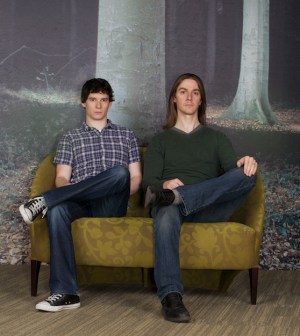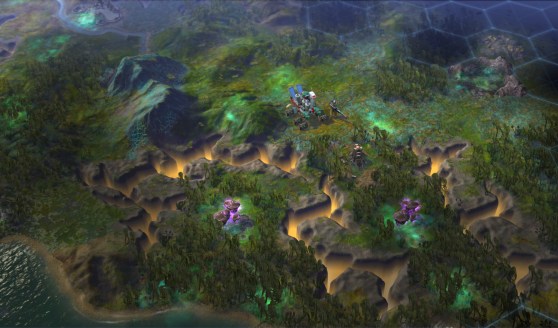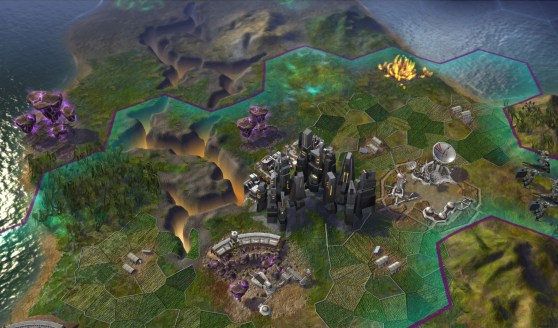David McDonough and Will Miller would like you to know that they ripped parts of Civilization: Beyond Earth from other games.
“We play a lot of games here. We didn’t invent a lot of the things in Beyond Earth,” Miller said. The pair are the lead designers on Firaxis’ latest game, which takes the acclaimed 4X strategy Civilization series (eXplore, eXpand, eXploit, eXterminate) into space on PC Oct. 24. “We don’t ever design in a vacuum, and it’s cool we don’t have to.”
I quizzed McDonough and Miller recently on exactly what those influences are, the rules they could break by taking Civ into space, and their personal favorites in the game (hint: They involve octopi and angels).
Civilization: Beyond Earth takes advantage of its new surroundings, asking players to set up colonies on planets that already have alien life, creating their cities among species whose motivations are a mystery, then layering on competition from other humans. (Read more about the game’s structure in this GamesBeat review.)
“We got the opportunity to try some pretty radical ideas in Beyond Earth,” McDonough said
Miller and McDonough say Beyond Earth’s structure and surroundings borrow heavily from other games: for starters, Stardock’s Galactic Civilizations series, which was itself a ripoff of Civilization. Stardock CEO Brad Wardell joked recently that even the GalCiv name indicates of what his company was trying to do in 2003: take Civilization into space. He laughs about it now, saying he probably wouldn’t even be able to get the trademark on the name today.
Miller and McDonough say they’ve turned the tables, borrowing elements of GalCiv in the creation of the new Civilization story and its alien-planet setting.
Space, the land of endless opportunity
“David and I have been very enthusiastic about space in general,” Miller said. “Our fans since Alpha Centauri have been wanting to see us go back there. It was right place, right time.”
The new setting led to more opportunities — alien life, a neutral faction, an orbital layer that enabled them to effectively influence a single hex of land with more than one unit — and the chance to stretch, McDonough said. “That’s the most exciting part for us as designers.”
But they borrowed liberally from others, including their own earlier work, along the way. Endless Space, an Amplitude game, inspired Civ: BE’s star-like, nonlinear tech web. Their work on the action RPG Kingdoms of Amalur: Reckoning before coming to Civilization affected the way units progress in this game and the decision-tree-style quests players face as they expand their civilizations.
The skill tree, with its many branches, is more like Blizzard’s Diablo games than the earlier Civilizations, McDonough said. His work on 2K Games’ notoriously hard XCOM strategy reboot affected Civ: BE as well.
“Maybe its OK to have the first hour be brutal,” Miller explains with a laugh.
Designing to aid — and confound — how you play
Fans also had a huge impact on the design of this Civ — specifically, the way they played to win the older games. That’s right: If you don’t like the new tech web, you may only have yourself to blame. Players had figured out the critical paths to the tech they needed to win and endlessly discussed them in the forums, the pair said. McDonough and Miller found that a bummer.
“We think it takes away a little bit from the game if you know what you’re going to go before you start,” McDonough said. He figured the space setting set them free: Technology could go in any direction, unconstrained by Civilization’s traditional march of history.
“We always want players to have to adapt,” Miller agreed. They wanted their tree to offer an inside-out approach, asymmetric, indeterminate, rewarding clever tactical combos more than fastest progression toward a particular tech goal. The “Virtue” trees, which are separate from the tech web and enable players who pursue a particular style to pick new enhancements for all their units, help to enforce this, they said.




